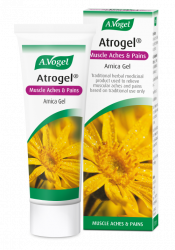Flat feet and foot cramps
It’s amazing how many people hate their feet. Usually it’s because of hard skin, bunions and ingrowing toenails but if you’ve ever experienced foot cramps, you’d hate them too.
Not all cases of flat feet are necessarily bad. Children don’t develop a strong arch structure until they’re about 10 years old and adults with a family history of flat feet may never find cause for complaint.
But while flat feet and foot cramps don’t always go together, they often do. There are other causes of cramps, such as electrolyte imbalances, overexertion of the foot and damaging footwear but a collapsed arch changes the whole shape of the foot, placing a lot of extra strain on the muscles.
There are a few ways in which you can tell if you have collapsed arches and therefore flat feet. The first involves getting your feet wet and making an impression on a dry patch of flooring. The inside of the impression should be dry, as a healthy arch wouldn’t have come into contact with the floor.
The second way is to place the soles of your feet together. Check to see if each instep is virtually in contact along the length of your feet, or whether there is a good parting of the feet around the midsection. Finally, can you comfortably insert your thumb under your instep whilst standing?
Flat feet and knee problems
Many people with flat feet find that their ankles roll inwards with each step. You can confirm this by watching yourself in a mirror walking on a treadmill at the gym, asking a friend to follow you as you walk and by checking to see if the soles of your most heavily used shoes or trainers are particularly worn on the inside of the heel.
With excessive inward rotation of the ankle, tendons and ligaments connecting the muscles and bones of the heel and shin bone will be stretched further on the inside of the lower leg than the outside. As the lower leg is pulled out of line, the knee fails to track straight and this is one of the common causes of knee pain.
Orthotics or exercises?
Search for flat feet on the internet and you’ll find the top of the first page full of adverts for orthotic arch supports that are inserted into the shoe. These add some height to the inside of the foot, preventing the ankle from rolling inwards and straightening the lower leg thus reducing strain on the tissue structures around the foot, ankle and knee. However, by offering support, they may ultimately further weaken the area rather than strengthen it.
Manual Therapist Christine Buckley, PhD, who operates from Fit for Purpose in Skipton has worked with the British Triathlon team, and was part of the Medical Services Team at the Glasgow Commonwealth games, advocates orthotics when necessary and particularly for short term pain relief, but also some exercises:
“The foot plays a crucial role in static posture and in dynamic movements involved in walking and running and can suffer from overuse and traumatic injuries causing dysfunction in the foot. This can then result in wide reaching problems further up the kinetic chain affecting knees, hips, pelvis and into the back and upper body.
Instead of resorting to orthotic devices or insoles to add support to the foot to treat pain or injuries, working on strengthening the intrinsic and extrinsic muscles involved in foot function could offer a better long term approach. With a strong, supple, stable and functional foot and ankle, risk of conditions such as flat feet, bunions, plantar fasciitis or plantar heel pain and traumatic injury could be reduced and performance improved”.
Exercises for strong, flexible feet and knee stability:
Exercise 1:
Stand on the bottom step of your stairs in trainers or similar footwear with a grip and with only the balls of your feet on the step. Holding on to the banister or wall for balance and control, stretch your Achilles’ tendon by lowering your weight through your heels so that the rear three-quarters of the foot drops slowly below the edge of the step. It shouldn’t be painful.
Exercise 2:
Standing on one foot, and almost on tip-toe on the other so that only the space between the ball of the foot and the base of the toes is in contact with the floor. Start to place a little weight through this foot, keeping the foot rigid and move your hips slightly forward to stretch the tendons in the whole of the mid foot and metatarsals (toe joints). Hold for a count of 20 and repeat on the other foot.
Exercise 3:
‘Short Foot': Strengthen the muscles in the mid-foot by clenching the feet whilst standing. Be careful not to curl the toes, keep them as flat as you can. Hold the clench for a count of 10 and repeat until you feel fatigue in the muscles of the feet.
Exercise 4:
Buy a ‘physio band’ from a running shop or sports outlet. These are flat stretches of rubber typically about a metre long and 15cm across. Loop it around one of the legs of your bed and tie the ends. Sit on your bed about 2ft from the leg the band is attached to and pull the band so that the forefoot is within it. Keep your heel planted to the floor and begin to turn your foot inwards, so stretching the band further. Release slowly and then keep doing this until the muscle running down the inside of the shin begins to ache. Then shuffle around the corner of your bed to exercise the other foot.
The muscle worked here is called the Tibialis Posterior. It is connected to the outside of the knee and its tendon, to the inside of the ankle, crossing the lower leg from outside to inside and so preventing the ankle rolling inwards when fully fit. Exercising this muscle is of excellent benefit to weak arches.
What else can help flat feet?
Other measures that can help flat feet and the associated structures include barefoot walking (just around the house is fine), heel raises (standing up on tip toes) and one-legged squats, if you can manage them, to improve the stabiliser muscles around the knee.
Finally, use a tennis ball or similarly sized spiky massage ball (from physio centres) to spread the muscles, tendons and joints of the foot. Simply roll your foot along its length over the ball as firmly as you can tolerate. This can be done whilst sitting to begin with, progressing to standing so that a little more weight can be applied to the ball. Not comfortable, but effective at relieving tension in the feet and a rather satisfying pain!
If you suffer pain as a result of these issues, do consider applying some Atrogel 2-4 times a day for relief over 20-30 minutes or take some Atrosan tablets over 4-6 weeks if the pain is longer term. At A.Vogel we believe in the patient helping themselves to health, hence the exercises and stretches but Manual Therapists like Christine are there to advise on orthotics, knee supports and individualised measures if the general advice here doesn’t begin to help over a month or two.





 Looking for a treatment to relieve pain in conditions such as muscle aches or pains, stiffness, rheumatic pain or after sporting injuries?
Looking for a treatment to relieve pain in conditions such as muscle aches or pains, stiffness, rheumatic pain or after sporting injuries?

